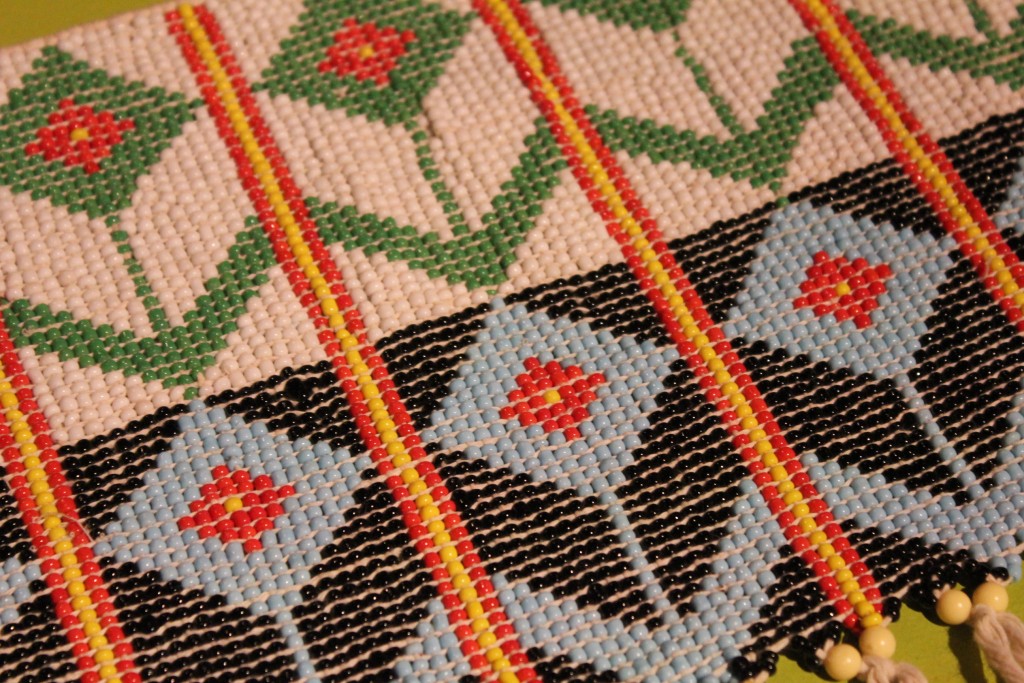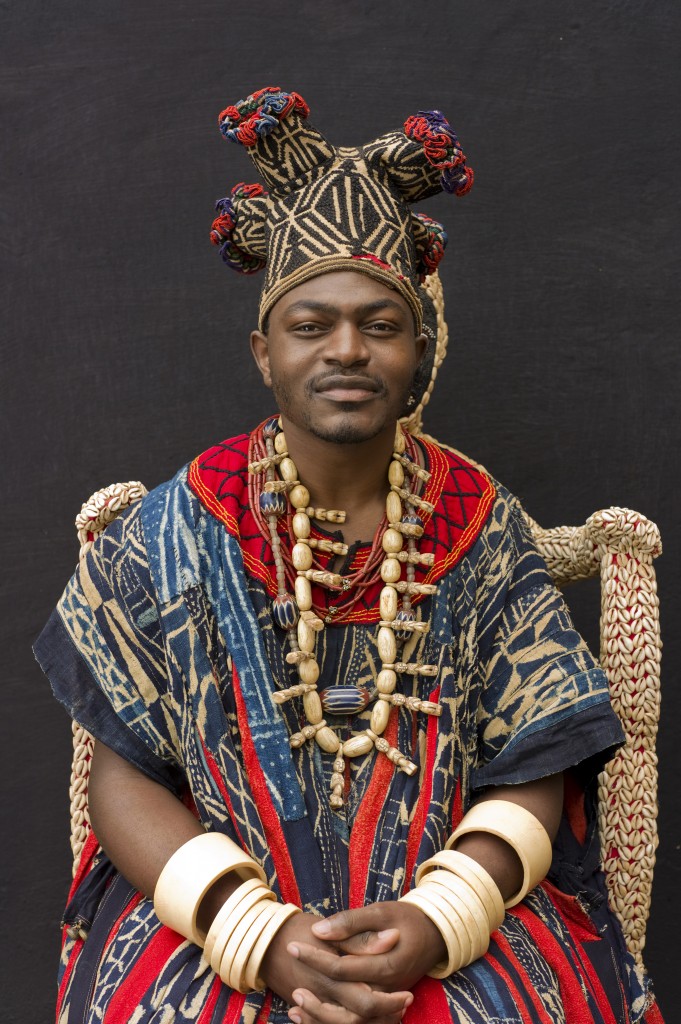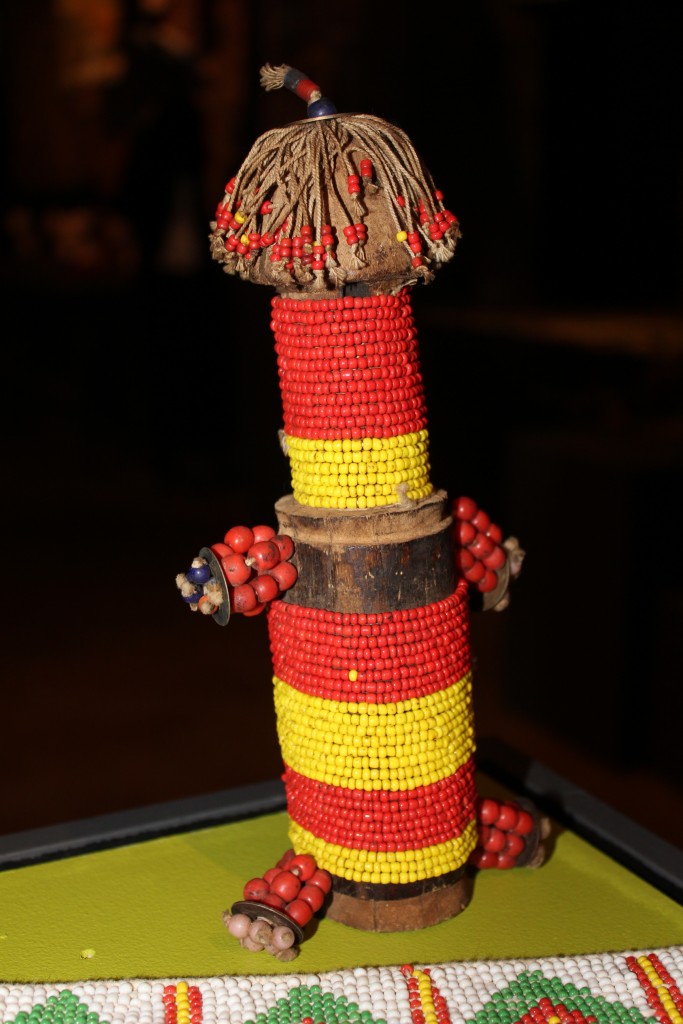Cameroon lies on the west coast of Africa in the Gulf of Guinea, bordering Nigeria to the north-west and Chad, Central African Republic, Gabon and Guinea to the east and south. The country is a microcosm of the whole of Africa, with semi-desert in the north, savannah running through to rainforest in the south and west equatorial rainforest in the south and west, and a range of volcanic mountains to the west of the country.
Beads and beadwork were used to add glory and status to the leader of the traditional chiefdoms, and were lent or given to men who had performed particular service to him.
The first beads to arrive in the area would have come from Egypt and the Middle East via the Trans-Saharan trade routes. The main exports were ostrich feathers, slaves and ivory. When the Portuguese started trading in West Africa and the main commercial centres moved to the coast, large quantities of beads became available. The large fancy Venetian beads, such as the chevrons, were much loved by all West African people, but the smaller glass seed, bugle and coral beads were used extensively by some groups to cover thrones, drinking horns and ceremonial garments. The use of beads were controlled by the chief and used to add value and status to certain articles related to power.
When a young Fali or Kirdi man becomes betrothed he makes a doll (fertility figure) from wood and decorates it with fibre hair, beads, leather and cowrie shells. He then gives it to his fiancé who wears it in a baby carrier on her back. The doll is a symbol of their marriage commitment and represents their future child. The man gives the doll the gender that he desires for his first-born and the young woman cares for the figure until the promised child is born; at this point the couple carefully store the doll away.
The beaded aprons known as a cache-sexes, was once used by the Kirdi and Fulani women as their only article of daily clothing.



